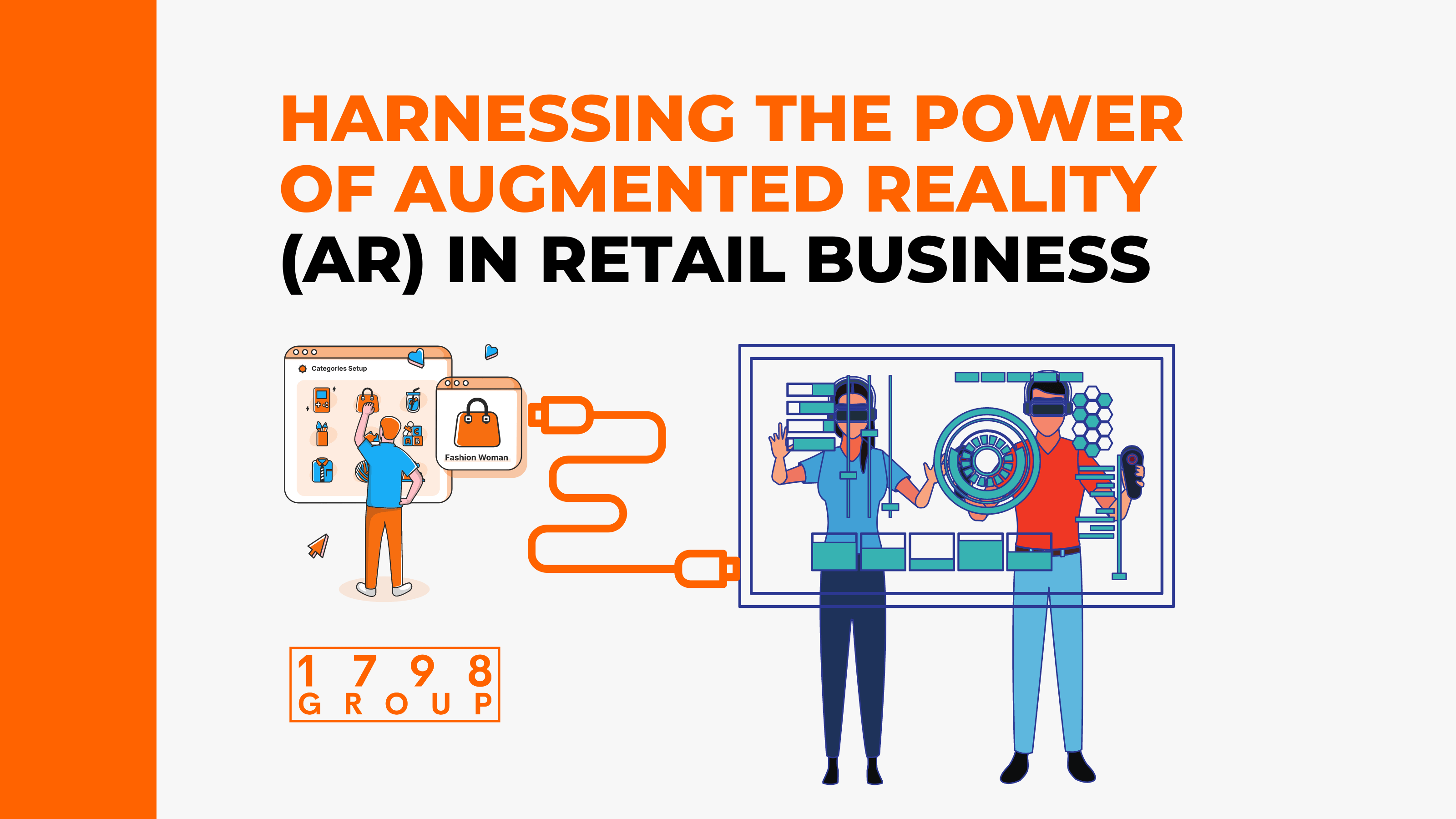
Introduction
Augmented Reality (AR) – a technology once seen as mere science fiction, has made impressive strides and is rapidly reshaping the retail landscape. From personalized shopping experiences to visualizing products in real environments, AR is making shopping more interactive, engaging, and convenient. This blog post aims to delve into the transformative impact of AR in the retail sector, providing actionable tips and strategies for businesses, coupled with real-life examples and compelling case studies.
Unpacking AR in Retail: A Revolutionary Transformation
AR technology is a game-changer for retailers and consumers alike. It bridges the gap between the digital and physical world, offering a unique ‘try before you buy’ experience. Notably, AR has two broad impacts in retail – enhancing online shopping and transforming in-store experiences.
1. Enhancing Online Shopping
AR enables customers to visualize products in their environment before purchasing. For instance, furniture retail giant IKEA launched its ‘IKEA Place’ app, which uses AR to help customers virtually place furniture in their homes. This kind of immersive shopping experience eliminates the guesswork associated with online shopping and boosts customer confidence.
Similarly, cosmetic retailer Sephora’s ‘Virtual Artist’ AR feature allows customers to virtually try on makeup, making the selection process more personalized and less risky.
2. Transforming In-Store Experiences
For brick-and-mortar stores, AR can supercharge the customer experience by providing interactive navigation, additional product information, and virtual fitting rooms. AR can enhance the customer journey in-store, making it more immersive and informative, ultimately leading to increased sales and customer satisfaction.
Actionable Tips and Advice for Retail Businesses
1. Develop AR-Based Shopping Apps
Building an AR application can significantly improve your customer’s online shopping experience. This is especially useful for businesses selling products like furniture, clothing, or cosmetics, where visualizing the product can make a huge difference.
2. Implement AR for In-Store Navigation
Integrate AR technology into your physical stores to provide interactive and easy-to-follow navigation. This can help customers quickly locate the items they’re looking for, thereby improving their in-store experience.
3. Leverage AR for Detailed Product Information
Use AR to provide customers with comprehensive information about your products. Customers can scan items using their smartphones to view product details like specifications, reviews, and related products, making their shopping experience more informative and enriching.
4. Incorporate AR into Your Marketing Campaigns
AR can make your marketing campaigns more engaging. Consider developing AR-based ads that allow customers to interact with your products in a unique, immersive way.
Real-Life Examples and Case Studies
1. Nike’s SNKRS App
Nike brilliantly integrated AR into their retail strategy with the SNKRS app. The app features AR quests for exclusive shoe releases, creating an engaging and interactive shopping experience. As a result, Nike saw a considerable increase in app downloads and user engagement.
2. American Apparel’s In-Store AR Experience
American Apparel developed an AR app enabling customers to scan in-store signs to access additional product information. This enriched shopping experience enhanced customer satisfaction and ultimately drove sales.
3. L’Oreal’s AR Makeover
L’Oreal, a leading beauty brand, acquired AR beauty tech company ModiFace to provide its customers with AR-powered virtual makeup trials. The move drove higher customer engagement and increased conversions, demonstrating how AR can revolutionize customer experiences.
Conclusion
AR technology is proving to be a powerful tool for revolutionizing retail business. It enhances customer experiences by creating immersive shopping environments, both online and in-store, fostering better decision-making and customer satisfaction. By offering personalized and interactive experiences, AR technology aids in nurturing customer relationships, leading to increased loyalty and sales.
Looking at the success stories of brands like IKEA, Sephora, Nike, American Apparel, and L’Oreal, it’s clear that integrating AR into a retail strategy can yield significant benefits. However, the key to harnessing the power of AR lies in understanding your customer’s needs and preferences and tailoring the technology to enhance their shopping journey.
As we move towards a more digitized future in retail, businesses that adopt and adapt to AR technology will likely lead the way. By transforming both online and offline shopping experiences, AR is not just a passing trend, but a pivotal tool shaping the future of retail.
Further Steps for Retailers
As a retailer looking to implement AR, start by identifying the areas in your customer journey that can benefit most from this technology. Is it in the online shopping experience? Or can your in-store navigation use a boost? Once you’ve identified these areas, partner with AR experts or invest in in-house development to create customized AR solutions that align with your brand and meet your customers’ expectations.
Moreover, remember that AR is not just about technology; it’s about creating unique, engaging, and value-added experiences for your customers. Always keep your customers’ needs and preferences at the center of your AR strategy. Involve them in the testing process, gather their feedback, and continually refine your AR experiences based on this feedback.
Lastly, stay updated with the latest trends and developments in AR technology. The world of AR is continually evolving, with new applications and tools emerging regularly. By staying current, you can ensure that your business continues to offer innovative, cutting-edge AR experiences to your customers.
Final Thoughts
Augmented Reality is a testament to the limitless possibilities of technology. As it continues to evolve and mature, its impact on the retail industry is poised to grow even more significant. In a world where customer experience is king, AR offers a unique avenue to captivate customers and revolutionize their shopping experiences. Embracing AR could be the key differentiator that sets your retail business apart in an increasingly competitive marketplace. Be bold, be innovative, and most importantly, be ready to harness the power of AR in retail.



